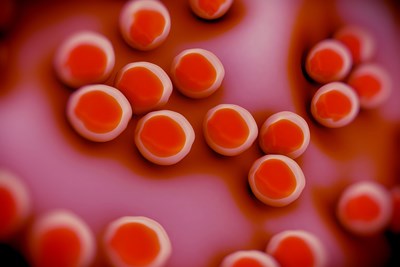A stye is a small bump that generally forms near the edge of the eyelid. Not to be confused with chalazia, inflammation that results in the formation of a granuloma in the eyelid, styes can be quite painful. They may look like a pimple or boil and often go away on their own within a few weeks. Here’s a look at what causes a stye.
Blocked Glands
There are several glands located in the eye to provide lubrication, and thus protection. The meibomian gland is a sebaceous gland that produces meibum, an oily secretion intended to keep your eye’s layer of tears from evaporating. The glands of Zei, also sebaceous glands, emit an oily sebum that provide moisture for the eyelashes. Both of these are located near the outside or edge of the eyelashes.
The meibomian gland is located more internally, thus the medical name for this particular stye is an internal hordeolum; styes on the outside of the eyelids are external hordeolums. The apocrine, or Moll’s, gland is a sort of sweat gland near the bottom of the eyelashes. A blocked Moll’s gland is also considered an external stye. When the substances these glands emit become thicker than normal, they move out of the gland much more slowly than normal. In this way, the ducts that emit the moisture become blocked, causing a stye.
Infection
The purpose of all the substances emitted from these glands are to keep the eyes moist. Additionally, the oils and tears help clear the surface of the eye of debris and infectious pathogens. When this isn’t happening, bacteria -- especially Staphylococcus aureus -- can get into places in the eye it shouldn’t be. Both the glands of Zei and Moll’s gland can develop a staph infection. Additionally, much like when an abscess forms in the skin on other places on the body, the follicles the eyelashes grow from can become infected. A blocked Zei gland may have to do with this as well, as the sebum it emits would not cover the eyelashes and move the bacteria away from them.
Underlying Disorders
Certain other medical problems can lead to the development of a stye. Blepharitis is an inflammation of the eyelids. They become swollen and red; depending on the underlying cause, it may be the inside or the outside of the eyelid. A common cause of blepharitis on the outside of the eyelid is a staph infection, so it is easy to see how a stye can develop from this.
Rosacea is a chronic condition in which you develop small rash-like areas on the face that are very red and often covered with tiny bumps or pimples. People with rosacea are prone to developing styes, because blepharitis is a common complication of rosacea.
Risk Factors
Although stys generally go away within a few weeks, often without medical intervention, they can be painful and embarrassing. Besides these underlying conditions, there are things that can make it easier for them to develop. Touching your eyes with dirty hands can transmit infectious bacteria to them.
Additionally, products that often common into contact with the eyes can cause problems. If you wear contact lenses, be sure to keep them free of bacteria by disinfecting them and only touching them with clean hands. Cosmetic products can also be problematic. Leaving makeup on your eyes overnight can eventually cause a stye, as can using makeup that is old. The best way to keep your eyes clear of styes is to practice good ocular hygiene.




